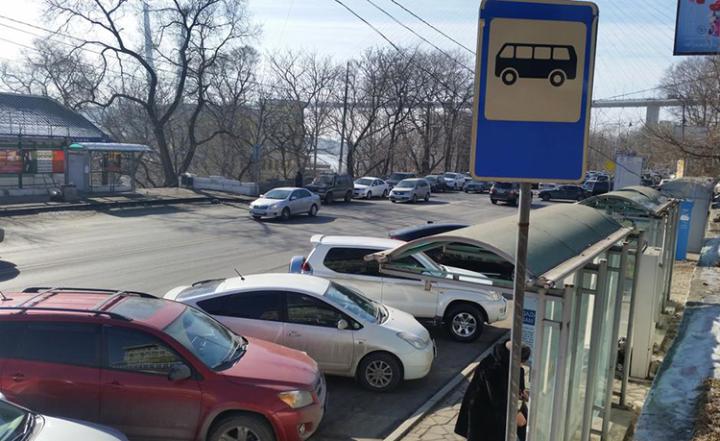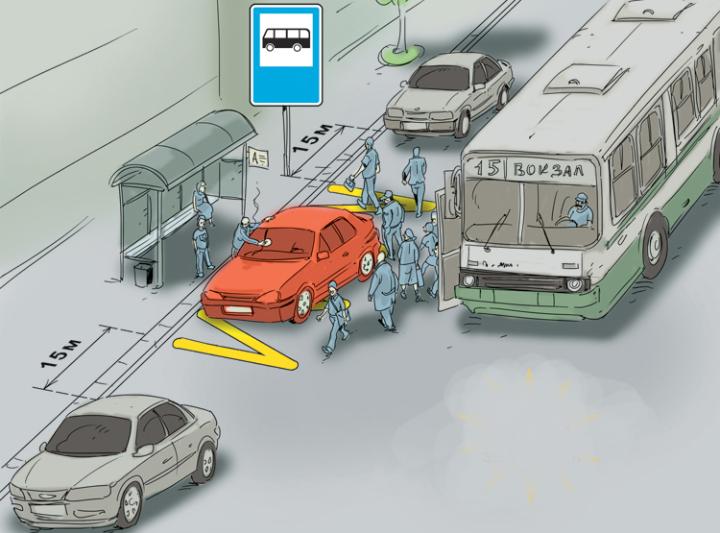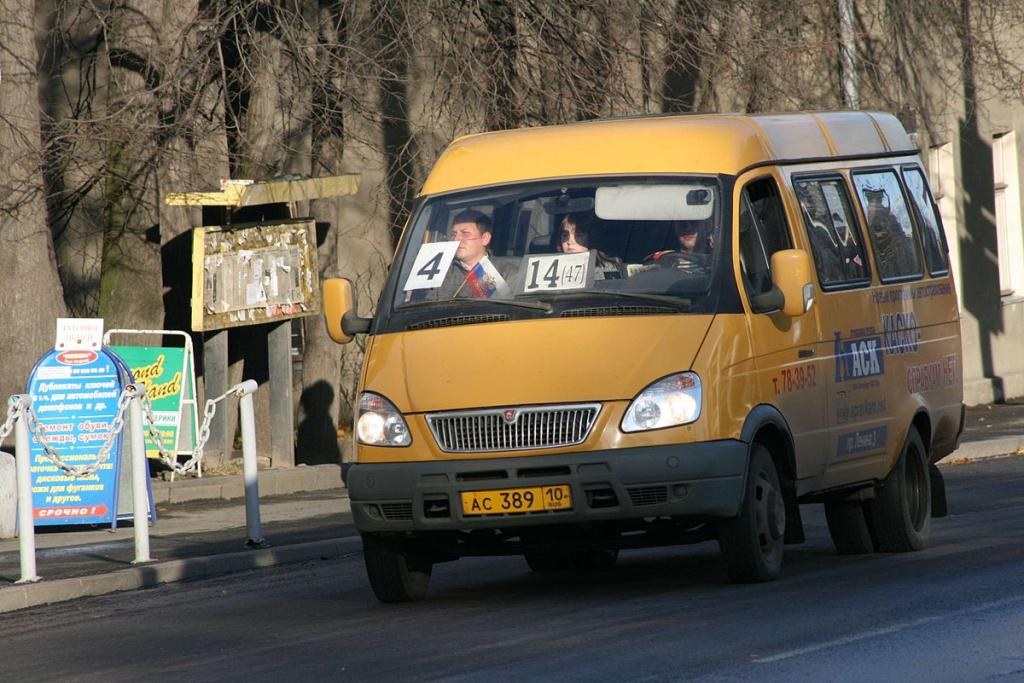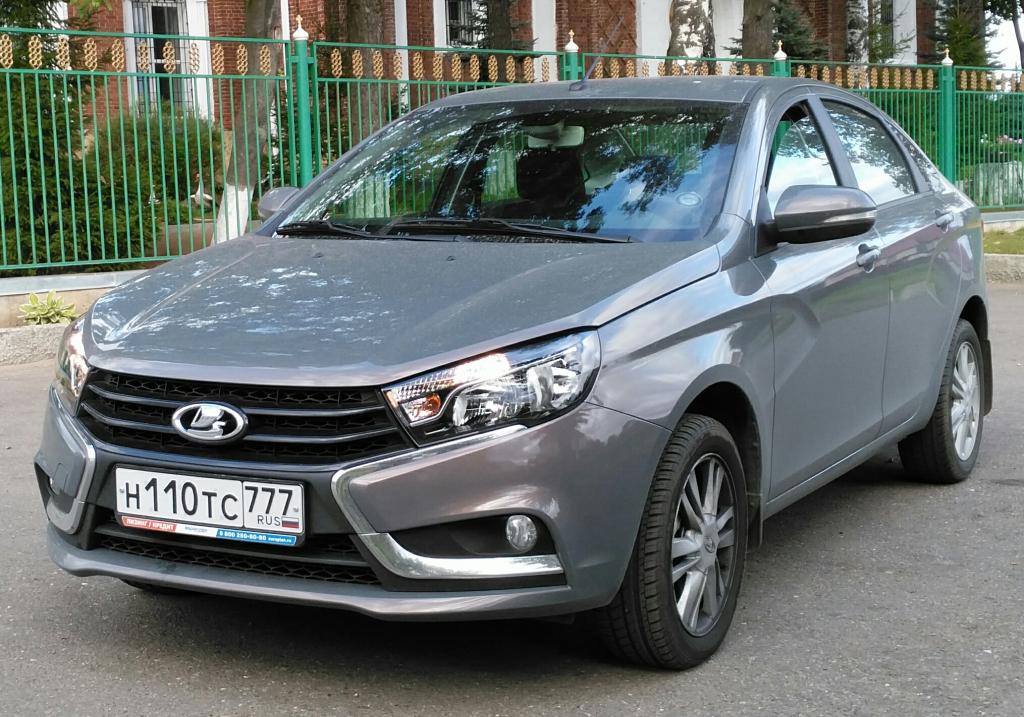In the SDA there is a clear wording of the concept of “stop”. According to the rules, this is a deliberate cessation of movement for a period of up to five minutes or more, if necessary for disembarkation and boarding of passengers or unloading and loading of a vehicle. Based on this definition, stopping at a stop or other place for disembarking passengers is the main reason for the cessation of movement. This action is prohibited where stopping is not permitted.

What is the difference from parking?
If a stop is a deliberate cessation of movement for a period of up to five minutes or more for disembarkation / boarding of passengers, as well as for unloading and loading of cargo, then parking is a deliberate stop in advance that is not associated with these actions.
The definitions make it clear that stopping and parking is a deliberate cessation of movement, performed at the request of the driver. These concepts are not related to a forced stop or a stop performed in accordance with traffic rules, for example, to let a pedestrian pass.

rules
According to the SDA, stopping the vehicle (vehicle) is allowed on the right side of the road at the side of the road, and in its absence it is permissible to park cars on the carriageway near the edge, on the sidewalk in accordance with clause 12.2.
It is allowed to stop the vehicle on the left side of the road, but only in settlements and on those sections of roads where one-way traffic. In other cases, you can put a car only on the right along the edge of the road in one row, unless otherwise indicated by additional signs, signs.
If there is a roadside to the right of the road, then cars are allowed to be driven only to it. If it is busy with other vehicles, then you can’t put a car on the roadway. But you can make a stop.
During a short-term suspension of movement, the driver does not leave the vehicle, except for cases of loading and unloading.

Where can’t you stand?
The rules clearly describe where you can stop and where this action is prohibited.
Let's consider in more detail:
- You can’t stop moving on the tram tracks, close to them, if this action interferes with the passage of the tram.
- It is forbidden to stop at railway crossings, overpasses, tunnels, bridges and under them. If the bridges have more than three lanes for driving in one direction, then a stop can be made.
- On the roadway near dangerous bends with visibility of the road less than 100 meters.
- It is forbidden to stop at a pedestrian crossing and five meters before it. You can stop immediately after the transition.
- At the intersection of the roadway and at a distance of 5 m from the edge of the intersected road.
- Stopping at a stop is not prohibited if this does not interfere with public transport.
- You can not stop driving where the car blocks traffic lights, road signs from other traffic jams, and creates obstacles for pedestrians crossing the road.
Disembarkation of passengers at a stop is allowed only on condition that there is no interference with the movement of a fixed-route vehicle, a passenger taxi. If there is a 3.27 sign before the stop, and the access to the stop is limited by continuous marking, then stopping traffic in such a place is strictly prohibited. In case of violation of traffic rules, a fine is imposed on the driver.
Stop in the wrong place
When stopping, many drivers turn on the emergency gang, indicating that they need braking. According to the rules, in the event of a forced stoppage of traffic on an unintended section, including when stopping at a stop where it is forbidden to be in accordance with the established additional signs, drivers are obliged to remove the vehicle from the carriageway to the place where parking is not prohibited as soon as possible. In other cases, traffic police inspectors may demand to prove the necessity of a forced stop.

A responsibility
The obligation to stop at a stop and in other places where this is not supposed to be done is determined by Article 12.19 of the Code of Administrative Offenses.
The punishment is:
- When stopping at a pedestrian crossing, the driver is fined 1,000 rubles.
- Upon termination of traffic on and near tram tracks, an amount of 1,500 rubles will have to be paid.
- If the stop has created an obstacle to other vehicles - a fine of 2,000 rubles.
- The most expensive thing is to stop the movement in places intended for the disabled - 5,000 rubles.
- When stopping on the railway crossing, the driver may lose the right to drive the vehicle for up to six months.
The amount of fines varies in different regions and is growing every year. In order not to pay for violations, it is necessary to correctly stop only in those places where it is allowed.
